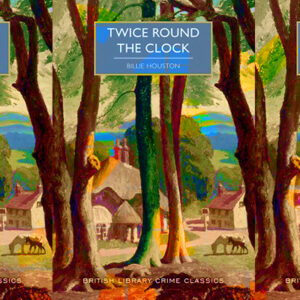If there’s an all-business town in Italy then it’s Turin. Capital of Piedmont, northern Italy, it sits impressively on the Po River. Just under two million inhabitants in the wider urban area. Like everywhere in Italy there’s a lot of history – the capital of the Duchy of Savoy before the Risorgimento, and first capital of the Kingdom of Italy in the 1860s. But what’s it really know for these days – a capital of industry and trade and a major centre of the resistance to Mussolini’s fascism back in the day. And, of course all of that means some good crime writing too.
But first – time for a little moan. Gialli is the slang for Italian crime fiction books. The name comes from the covers of a popular Italian series of crime stories launched by publisher Mondadori in 1929, which were yellow (in Italian: giallo). Annoyingly far fewer Italian gialli writers seem to get translated into English than other European languages – say, French or German and certainly the Scandinavians. So we don’t have English translations of some serious Turin classics.
For instance, one of the most famous and popular amateur sleuths in Italy is the secondary school teacher Camilla Baudino, created by the former teacher Margherita Oggero (born in Turin in 1940). Camilla lives in Turin, is fairly happily married, and quotes John Donne while becoming embroiled in the deadly secrets of the Turin bourgeoisie. The first of her five clever and witty novels (unfortunately none of which have been translated into English) was made into a movie, and the others have been the inspiration for a seven season TV series.
So, come on publishers!!!
Anyway, rant over – here’s what you can read in English, set in Turin….
There are some Turin authors in translation. You can read the work of the popular crime writing duo Carlo Fruttero and Frnaco Lucentini (the former originally from Turin). Their novels in English encompass many Italian cities – The Lover of No Fixed Abode (1986) is set in Venice, The D Case Or The Truth About The Mystery Of Edwin Drood (1989) in Rome, and An Enigma by the Sea (1991) on the Tuscan Coast. But perhaps their best novel – now hard to find but available in English – is set in Turin, was one of their first collaborations, and is called The Sunday Women (1972).
The Sunday Women follows an investigation by commissioner Santamaria concerning the murder of an architect of dubious fame, Garrone. Among the protagonists are Anna Carla Dosio, a beautiful and rich woman, and her friend Massimo Campi, a rich gay man. Later in the novel, Campi’s boyfriend, Lello, a municipal clerk who was investigating by himself on the murder, is also killed. In the end of the novel, suspicions against the two are raised when Santamaria discovers that Garrone had been killed for his blackmailing, related to a project for a new quarter of buildings, against an old woman. Academics consider The Sunday Women as one of the first examples of modern Italian crime novels and Torinese consider it one of the best dissections of the city’s bourgeoisie in literature.
The author Valerio Varesi was also born in Turin. He has worked as a journalist with La Repubblica and is the author of 16 bestselling crime novels starring Commissario Soneri. Of the total six have so far been translated into English. The order is a bit confusing, and not overly important, but the six in English are River of Shadows, The Dark Valley, Gold, Frankincense and Dust, A Woman Much Missed, The Lizard Strategy and The Unseen. Commissario Soneri is from Parma and investigates crimes throughout Parma (a couple of hundred miles from Turin) and the Po River Valley. The valley between Parma and Turin is a foggy, misty place, usually rainy, flooding – a place where bad deeds often go unseen. Soneri is prone to despondency (while also being a cigar-smoking gourmand), though always dogged in his pursuit of the truth. His investigation often uncover corruption and a raft of ghosts from Italy’s divisive past.
Diana Bretherick’s Lombroso series are all set in Turin in the late 1880s and feature the world’s first criminologist, Cesare Lombroso and his assistant James Murray, a young Scottish doctor. Lombroso was apparently a real person who was known as the ‘father of modern criminology’. The first book in the series is City of Devils (2013). It’s 1887, Murraytravels to the vibrant city of Turin to study with Cesare Lombroso. But just hours after his introduction to the unconventional Lombroso, the discovery of a horrifically mutilated body in the nearby Piazza Statuto, and a note that appears to implicate the celebrated criminologist himself, changes everything. Lombroso and Murray return in The Devil’s Daughter (2016). It’s a year later, 1888, and Murray receives a letter from Sofia Esposito, a woman he once loved and lost. Sofia’s fifteen-year-old cousin has vanished but, because of her lower-class status, the police are unwilling to investigate. Lombroso and Murray uncover a series of mysterious disappearances of young women and rumours of a haunted abbey on the outskirts of Turin.
Giorgio De Maria’s The Twenty Days of Turin (1975) recaptures the era of 1970s Italian domestic terror that swept the nation, including Turin. Part crime, part fantasy, part cult novel, De Maria reveals the city of Turin suffering a twenty-day “phenomenon of collective psychosis” culminating in nightly massacres that hundreds of witnesses cannot explain. The answer seems to lie in Turin’s occult netherworld. The book is an allegory inspired by the horrific neo-fascist campaigns of the time, the so-called “Years of Lead”. De Maria is a musician and author. The Twenty Days of Turin was first published in 1975 – the height of the terror period – and not translated into English until 2017 (when it became a NPR Best Book of the Year). In Turin, and across Italy, it has remained a cult book for over 40 years now and is regularly nominated as one of the best dystopian novels in history.
And finally, Turin is home to one of the weirdest stories about crime writing and crime writers. The bizarre and macabre tragedy happened back in February 2012 when the Turin Police discovered the dead body of 19-year-old Nigerian immigrant Anthonia Egbuna in the River Po. The Carabinieri reported she had been stabbed to death, but it took several months to establish her identity. Eventually searching her apartment they found among her belongings a nine-page story entitled The Rose and the Lion. This led to the arrest of aspiring author 34-year-old Daniele Ughetto Piampaschet. Police discovered that Piampaschet had had a relationship with Egbuna. Police claimed he stabbed her after she refused to stop working as a prostitute. In Piampaschet’s short crime story the murderer strangles a Nigerian prostitute and then commits suicide.
But Piampaschet didn’t commit suicide. Instead, after killing Anthonia Egbuna and dumping her body in the Po he went home and wrote his crime story. Then, suspecting the police were on to him, he went on the run and attempted to flee Italy for Tunisia. Eventually after a long hunt, followed by an investigation, his denials, and repeated appeals, the Italian Supreme Court sentenced Piampaschet to 25 year and six months in Turin jail in 2019. He remains a failed crime writer.

















